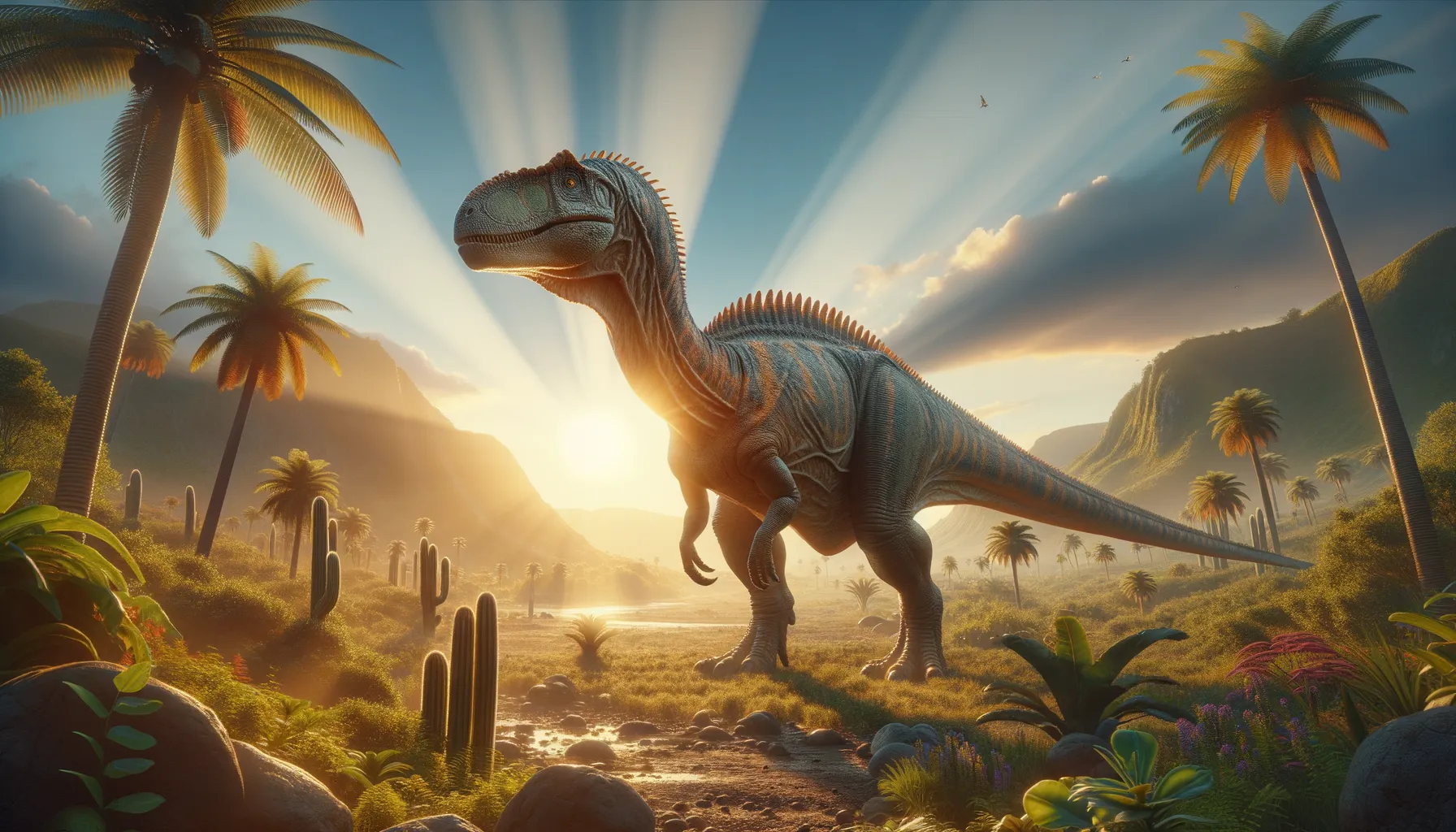
Lessemsaurus
A gentle giant of the ancient world.
Period
Triassic
Length
Approximately 30 feet long.
Height
Roughly 10 feet tall at the shoulder.
Weight
About 10 tons.
Lessemsaurus was a large herbivorous dinosaur from the Late Triassic period, known for its long neck and substantial size. It roamed the ancient landscapes of what is now South America. The dinosaur is often depicted with a massive body, supported by strong limbs, adapted for a plant-based diet. Its discovery has provided valuable insights into the early evolution of sauropodomorph dinosaurs, contributing significantly to our understanding of prehistoric life.
Diet
Lessemsaurus was an herbivore, feeding primarily on plants. It consumed a variety of vegetation, including ferns and other low-lying greens. Its long neck allowed it to reach higher foliage as well.
Hunting
As a herbivore, Lessemsaurus did not hunt for food. It would have foraged through vegetation to meet its dietary needs. The dinosaur relied on its size and strength to deter potential predators.
Environmental challenges
Lessemsaurus faced several environmental challenges, including fluctuations in climate during the Triassic period. The shifting ecosystems meant that the dinosaur had to adapt to different types of vegetation. Additionally, competition for food with other herbivores would have posed a challenge. Predatory threats were persistent, with its large size being a key defense mechanism.
Speed
Slow-moving due to its large size.
Lifespan
Estimated to live several decades.
First discovery
Discovered in Argentina in the late 20th century.
Fun Facts
- Lessemsaurus was a massive herbivorous dinosaur that lived during the Late Triassic period, over 200 million years ago.
- It was named after the famous dinosaur author and journalist Don Lessem, who has written extensively about dinosaurs.
- Despite its large size, Lessemsaurus is believed to be an ancestor of the even larger sauropods that followed in later periods.
- Fossil evidence suggests it might have roamed what is now South America, particularly Argentina.
- Lessemsaurus had a long neck and tail, helping it reach high vegetation and maintain balance as it moved.
- It is estimated to have been around 30 feet long, making it one of the larger dinosaurs of its time.
- Lessemsaurus has provided scientists with valuable information about the early evolution of sauropodomorphs, the group that includes massive long-necked dinosaurs.
Growth and Development
Lessemsaurus likely grew continuously throughout its life, with rapid growth phases during its juvenile years. Its development included an increase in size and robustness, vital for its survival. The dinosaur's long neck and tail grew proportionately with its body, aiding in feeding and balance. Adult Lessemsaurus were significantly larger than their juvenile counterparts.
Habitat
Lessemsaurus inhabited lush, vegetative regions that were abundant during the Triassic period. These areas were likely rich in ferns and conifers, providing ample food sources. The terrain varied, with some areas possibly being semi-arid, which would require migration for survival. Rivers and floodplains would have been integral to its habitat, offering water and nourishment.
Interaction with other species
Lessemsaurus coexisted with other dinosaur species, both herbivores and carnivores. It is likely that it moved in herds for protection and social interaction. These herds could deter predators due to their large collective size. Competition with other herbivorous species for food would necessitate efficient foraging strategies.
Natural lifespan
Lessemsaurus had a natural lifespan of several decades.
Reproduction
Lessemsaurus reproduced by laying eggs, as is common among dinosaurs. Clutches of eggs would be buried or hidden in vegetation for protection. The dinosaur possibly used communal nesting sites for safety in numbers. Parental care, if any, might have involved guarding the nest from predators.
Social behaviour
Lessemsaurus was likely sociable, moving in herds for protection. Herd behavior would enable alertness to predators and increase survival chances. Within these herds, social hierarchies might have existed, dictated by size or age. Communication among individuals could be through vocalizations or visual signals.
Fossil locations
The fossils of Lessemsaurus have been primarily found in Argentina. These discoveries have occurred in rock formations dating back to the Triassic period. These fossil sites have provided crucial data on the dinosaur's physical structure and living conditions. Continued excavations in the area promise further insights into this intriguing species.
